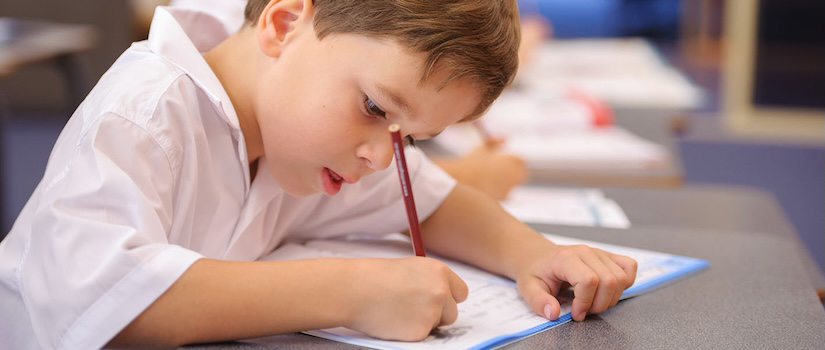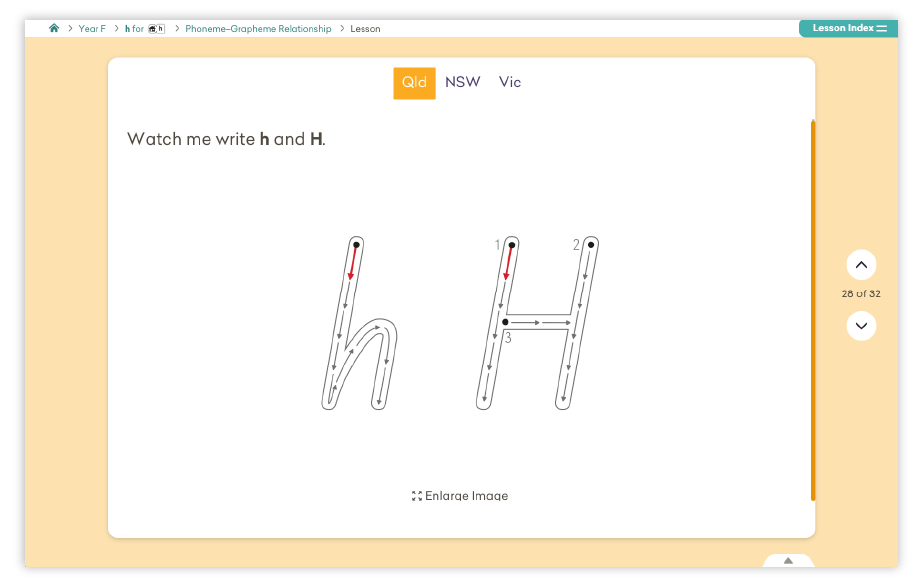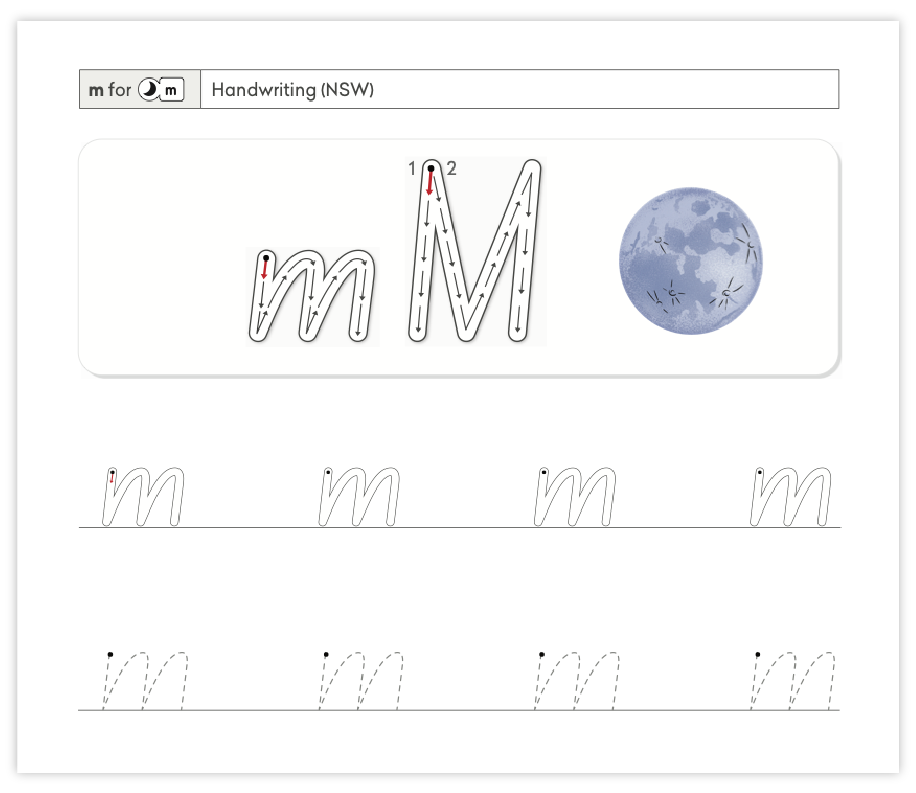Articles & Videos
Spelling and handwriting: A valuable partnership!
Categories
Subscribe to our newsletters
Receive teaching resources and tips, exclusive special offers, useful product information and more!
Spelling and handwriting: A valuable partnership!
Sound Waves Literacy 19/5/25

All educators know the challenge of juggling competing priorities in a crowded curriculum. Handwriting can easily be the first thing to be overlooked, but for Foundation teachers it’s a crucial part of literacy development — let’s unpack why.
While educators face conflicting tension between teaching handwriting in the context of a systematic synthetic phonics sequence, or teaching handwriting according to similar line groups, this article focuses on the former.
Recent neurological studies have confirmed handwriting’s important role in developing an understanding of sound–letter correspondences and therefore its contribution to overall spelling and reading development.1 2
Reading, spelling and writing are reciprocal skills, so teaching these components together reinforces students’ knowledge and strengthens their understanding. Research shows that incorporating handwriting into spelling lessons helps reinforce letters and sounds, leading to long-term benefits. The physical act of handwriting helps develop pathways in the brain that link the shape of the letter to the sound it represents.
Ultimately, the purpose of handwriting is to produce fluent, legible written communication, without having to stop and think about the mechanics of letter formation. While typing has become more common for students, studies suggest the act of handwriting (rather than typing) creates an imprint of each letter in a part of the brain that is related to visual recognition. This confirms there is a strong link between handwriting and learning to read and spell, and is why handwriting instruction is essential in the first year of school when students are first learning key literacy skills.3
However, that’s not all that’s at play. There is an enormous cognitive load involved in producing a piece of writing, especially due to the complexities of handwriting itself. Learning to hold a pencil, placing pressure on the page (but not too much!), remembering how to form each individual letter and then combining those individual letters to make words. The ability to write fluently (without considering each of the aforementioned steps) reduces the cognitive load, making the task of writing more achievable and less stressful.
So how can we forge this crucial link between handwriting and learning to read and spell during the first year of school? And what resources are available in the Sound Waves Foundation program to support this?
Embed handwriting in your phonics sequence
Systematic synthetic phonics instruction is essential in early literacy. Early literacy is also when students are first learning how to write and form letters.
Learning the phoneme, learning the grapheme and learning how to form the grapheme are three pieces of knowledge that reinforce one another and connecting them is considered best practice for phonics instruction. For example, telling students: ‘This is the sound /h/, we can represent /h/ using the letter h, this is how we write letter h.’
Sound Waves Literacy’s systematic synthetic phonics sequence has been crafted to introduce phoneme–grapheme relationships in an order that gets students up and running with reading and spelling quickly.
In addition, the Sound Waves Foundation sequence follows the instructional principles supported by Carnine et al.4 One of the principles of this research is to separate letters that look similar in a sequence. Children are less likely to confuse visually similar letters (such as reversible b and d) if they are taught these letters separately and given time for spaced practice.
Explicitly teach letter formation

Teachers know the value of explicit teaching and it’s no different with handwriting. Each letter should be carefully modelled, with emphasis on the correct starting point and direction, so students can consistently form the letter accurately and efficiently.
Bad habits can be difficult to break and since many students arrive at school already attempting to write, it’s crucial to intervene early and dedicate time to establishing accurate letter formation. Once students can master accurate and automatic letter formation, their cognitive load decreases, allowing them to focus on what they’re writing instead of how to write it.
When a letter is first introduced in Sound Waves Foundation, the Phoneme–Grapheme Relationship lesson includes a Model Writing the Grapheme slide (with a choice of Qld, NSW or Vic handwriting font) so teachers can model the correct letter formation.
After teacher modelling, students are encouraged to form the letter the same way they have been shown, using multi-sensory approaches including writing the letter with their finger in the air, on the mat or on their desk.
Provide time for dedicated practice
We know practice makes perfect, particularly when it comes to handwriting, so the more opportunities teachers can provide for letter formation practice, the better.
As students work through the Student Book activities that reinforce the teaching of phoneme–grapheme relationships, they’ll get plenty of opportunities to practise their handwriting. In addition, each Foundation unit at Sound Waves Literacy Online includes a dedicated Handwriting Practice section. Here you will find printable activities that match the grapheme taught in the lesson. The printable activities are available in Qld, NSW and Vic handwriting font, and provide valuable opportunities for practising the newly introduced grapheme. Again, clear prompts are provided with starting points, directional arrows and numbers for support.

You can also provide additional handwriting practice by using some of the other resources available in Sound Waves. For example, printing the Art Templates (in the Games and Extra Activities section of Foundation units) and providing ‘free practice’ of letters (not bound by lines or letter size) beside the artwork.
Build students’ familiarity with the letters and keep them engaged by varying the writing implements used – think paint brushes, chunky crayons, fingers in sand trays or desks smeared with shaving cream. Encourage students to form letters of various sizes, while they focus on building their muscle memory for the correctly formed letter.5
Looking beyond the Foundation year
Sound Waves Literacy Online provides access to resources for all year levels, so you may choose to give Year 1 and 2 students, or older students still struggling with letter formation, the Handwriting Practice printable activities from the Foundation year.
As well as teaching letter formation in the direct context of spelling lessons, it’s also important to work on speed, automaticity and legibility. This is why a dedicated handwriting program, like Writing Time, is incredibly valuable.
With Writing Time, students are provided with opportunities to hone letter formation skills, but the focus is on consistent size, even spacing and legible writing on lines. The letters in Writing Time are grouped according to how they are formed, reinforcing efficient letter formation and easing the transition from printing to cursive writing.
Head to our website to learn more about Sound Waves Literacy and Writing Time, or contact an Education Consultant to find out how these programs can work for your school.
References
James, K. and Berninger, V. (2019) ‘Brain research shows why handwriting should be taught in the computer age’, Learning Difficulties Australia Bulletin, 51(1), pp. 25–30.
James, K. and Engelhardt, L. (2012) ‘The effects of handwriting experience on functional brain development in pre-literate children’, Trends in Neuroscience and Education, 1(1), pp. 32–42. doi: https://doi.org/10.1016/j.tine.2012.08.001.
Toft, T. E. (2011) ‘Better learning through handwriting’, ScienceDaily, Translated by A. Sivertsen. Available at: https://www.sciencedaily.com/releases/2011/01/110119095458.htm#:~:text=Writing%20by%20hand%20strengthens%20the,this%20process%20may%20be%20impaired (Accessed: 20 May 2025).
Carnine, D. W., Silbert, J. and Kame’enui, E. J. (1996) Direct Instruction Reading (Third Edition). Hoboken, NJ: Prentice Hall.
Shanahan, M. and Hansberry. B (2022) ‘The Importance of Handwriting, with Debbie Draper’ [audio podcast episode]. Dyscastia. Available at: https://dyscastia.podbean.com/e/the-importance-of-handwriting-with-debbie-draper/